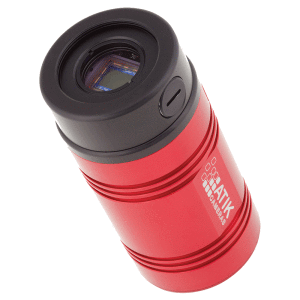latitude 34deg 51'South, longitude 148deg 58 East
Cameras
LSO has a number of cameras, not all of them in use at any time. They exist as a time-line of my efforts to get a decent image over the years!
Top of the list is the ATIK 4120EX OSC (One Shot Colour) cooled DSI camera. This does most of my current deep sky work, and also is my 'ranging shot' camera- it gets an image fast so I can be sure I'm happy with the setup.


Next comes the ZWO 1600MM. I got this cooled mono camera with the motorised filter wheel and narrow band filter set to try out this area of imaging, but am still very much just playing around.
In the mean time it makes a great guide camera.
A Canon EOS 1100 produces great images and has easy to use computer control software but mine has developed the dreaded 'Error 35' message This is what finally tipped me over into lashing out on dedicated astro-cameras.
I've also tried Sony (to much amp glow) and Nikon (too nice to just use on a telescope...)


The Meade DSI Imager was my first dedicated astro-camera. This did excellent service for many years, and can still be called on for field guiding (but the USB socket is a bit iffy now).
I joined QCUIAG* and played with various webcams and security cameras. The main result was bricking a perfectly new Vesta webcam, but it introduced me to using software and digital cameras to image. Philips Vesta webcam (and a few others ) used a Sony CCD chip and could be fooled into taking long- 30sec+- exposures. It could also be operated on to do even longer exposures (which is how I bricked one...)
*Quickcam and Unorthodox Imaging Astronomy Group


Low light video security cameras pre-date those using infra-red floodlights. With a sensitivity of less that 0.1 lux they work great for imaging, but not on very extended objects. I got good planetary and planetary nebula images with mine.

To go with the Orion 60mm Guide scope, this is a surprisingly sensitive camera.
Mono because that add to the sensitivity, and I haven't tried it as a planetary camera.